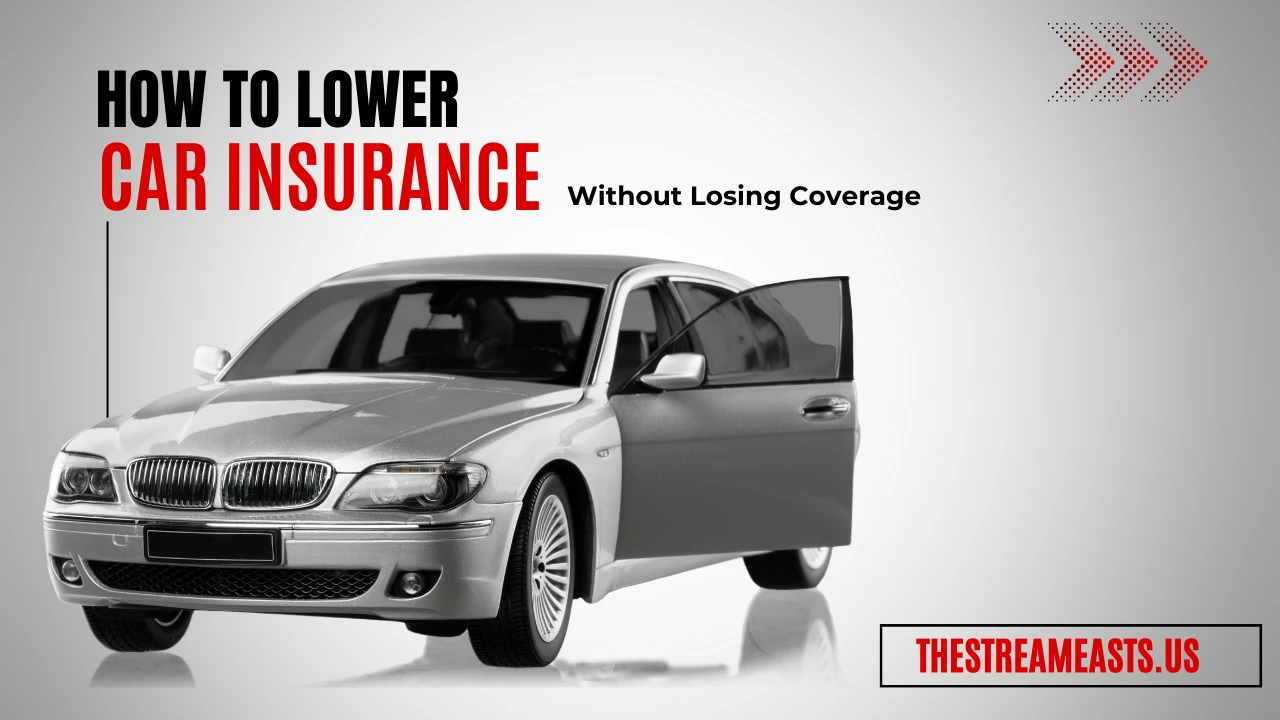How to Lower Car Insurance Premiums Without Losing Coverage
Car insurance premiums can be a significant financial burden, especially as costs continue to rise. In 2024-25, finding ways to reduce these expenses without sacrificing coverage is more crucial than ever. Whether you’re a new driver or have years of experience, this guide will provide actionable strategies to lower your car insurance premiums while maintaining essential coverage. You’ll learn about the latest trends, practical tips, and common pitfalls to avoid, all backed by recent data and expert insights.
According to recent industry reports, car insurance premiums have increased by an average of 5% annually over the past five years. With the economic challenges many face, it’s essential to find ways to keep these costs manageable without compromising your safety or legal obligations.
Understanding Car Insurance Premiums
Car insurance premiums are the payments you make to an insurance company in exchange for coverage. The cost of these premiums depends on various factors, including your driving history, the type of car you drive, where you live, and your credit score. Insurance companies use complex algorithms to assess risk and determine the price you pay.
For instance, data from the Insurance Information Institute shows that drivers with poor credit scores can pay up to 91% more in premiums compared to those with excellent credit. Understanding these factors is the first step in identifying areas where you can save money.
Why Reducing Premiums Matters in 2024-25
As we move into 2024-25, the relevance of reducing car insurance premiums is more apparent than ever. The rising cost of living, coupled with increased expenses related to vehicle maintenance and fuel, makes it imperative to find savings wherever possible. Additionally, with new technologies and data-driven underwriting, insurance companies like phrma etc, are adjusting their pricing models, often leading to unexpected increases for many policyholders.
A study by J.D. Power revealed that the average annual car insurance premium in the U.S. reached $1,548 in 2023, a significant increase from previous years. By learning how to manage and reduce these costs, you can free up valuable resources for other essential expenses.
Key Features That Affect Your Car Insurance Premiums
- Driving Record: A clean driving record is one of the most significant factors in keeping your premiums low. Accidents and violations can lead to substantial increases.
- Vehicle Type: Cars with high safety ratings and low repair costs tend to have lower premiums. Luxury and sports cars usually incur higher costs.
- Location: Where you live affects your risk profile. Urban areas with high traffic and crime rates typically result in higher premiums.
- Credit Score: Insurance companies use credit scores as a predictor of risk. Improving your credit score can lead to lower premiums.
- Coverage Levels: Higher coverage limits and lower deductibles increase premiums. Balancing adequate coverage with cost is crucial.
- Mileage: The more you drive, the higher the risk of an accident, which can increase your premiums.
- Discounts: Many insurers offer discounts for various reasons, such as bundling policies, having safety features in your car, or maintaining good grades if you’re a student.
Benefits of Lowering Your Car Insurance Premiums
Reducing your car insurance premiums provides several benefits:
- Financial Savings: The most immediate benefit is saving money, which can be allocated to other essential areas of your budget.
- Increased Flexibility: Lower premiums mean more disposable income, offering greater flexibility in managing your finances.
- Peace of Mind: Knowing you’re not overpaying for insurance can reduce stress and provide peace of mind.
- For Small Businesses: Lower premiums can contribute to reducing operational costs, particularly if you have a fleet of vehicles.
- For Families: Savings on insurance can be redirected to other family needs, such as education or healthcare.
Step-by-Step Guide to Lowering Car Insurance Premiums
- Shop Around: Start by getting quotes from multiple insurance providers. Online comparison tools can make this process easier.
- Increase Your Deductible: Raising your deductible can lower your premium, but ensure you can afford the higher out-of-pocket cost in the event of a claim.
- Take Advantage of Discounts: Ask about available discounts, such as those for safe driving, bundling policies, or having anti-theft devices.
- Improve Your Credit Score: Work on improving your credit score to qualify for lower premiums.
- Reduce Coverage on Older Cars: If you have an older vehicle, consider reducing coverage to just liability or dropping collision and comprehensive coverage.
- Drive Less: If possible, reduce your annual mileage to qualify for low-mileage discounts.
- Maintain a Clean Driving Record: Avoid traffic violations and accidents to keep your premium low over time.
Common Mistakes to Avoid When Lowering Premiums
- Cutting Essential Coverage: Avoid the mistake of reducing coverage to dangerous levels just to save money. This could leave you financially vulnerable in the event of an accident.
- Ignoring Discounts: Many people fail to inquire about discounts they qualify for. Always ask your insurer about potential savings.
- Not Updating Your Policy: Life changes, such as moving or paying off a car, can affect your premium. Update your policy to reflect your current situation.
- Choosing the Cheapest Policy: The lowest premium isn’t always the best deal. Ensure the coverage meets your needs.
- Forgetting to Review Annually: Insurance needs can change. Review your policy each year to ensure it still offers the best value.
Current Trends in Car Insurance Premiums
The car insurance industry is continually evolving, with several trends impacting premiums:
- Telematics: Many insurers are using telematics (tracking driving behavior via a device or app) to offer personalized rates. Safe drivers can benefit from significant savings.
- Usage-Based Insurance (UBI): This model, where premiums are based on how much and how well you drive, is gaining popularity.
- AI and Big Data: Insurance companies increasingly use AI to assess risk more accurately, which can lead to more tailored and potentially lower premiums for some.
- Climate Change: Increased natural disasters have led to higher premiums in certain regions. Areas prone to flooding, hurricanes, or wildfires may see steep increases.
A report by MarketWatch forecasts that the global car insurance market will grow at a CAGR of 3.4% from 2024 to 2028, reflecting these trends and the ongoing adaptation of insurers to new technologies.
Case Study: Successful Premium Reduction
Consider the example of Romeo, a 35-year-old driver from Texas. Romeo was paying $1,800 annually for car insurance but managed to reduce his premium to $1,200 by taking several steps:
- He improved his credit score from 650 to 720.
- John increased his deductible from $500 to $1,000.
- He installed an anti-theft device in his car, qualifying for a discount.
- John also took a defensive driving course, which reduced his premium further.
This case illustrates how proactive steps can lead to substantial savings.
Pros and Cons of Lowering Car Insurance Premiums
| Pros | Cons |
|---|---|
| Financial Savings | Potentially Higher Out-of-Pocket Costs |
| More Budget Flexibility | Risk of Insufficient Coverage |
| Access to Discounts | May Require Lifestyle Changes (e.g., driving less) |
| Reduced Stress | Need for Continuous Monitoring and Updates |
FAQs About Car Insurance Premiums
Q: How often should I review my car insurance policy?
A: It’s advisable to review your policy annually or whenever you experience a major life change.
Q: Can I lower my premium by paying annually instead of monthly?
A: Yes, many insurers offer a discount if you pay your premium in full annually rather than in monthly installments.
Q: Does bundling home and auto insurance really save money?
A: Typically, yes. Bundling can save you up to 25% on your premiums.
Conclusion
In 2024-25, lowering your car insurance premiums without losing coverage is not only possible but also essential in maintaining financial health. By understanding the factors that influence your premiums, taking advantage of discounts, and avoiding common mistakes, you can achieve significant savings. Regularly reviewing your policy and staying informed about industry trends will help you continue to save in the years to come.
Take the next step by reviewing your current policy or seeking quotes from new providers. With the right approach, you can enjoy both peace of mind and a healthier wallet.



No Comment! Be the first one.